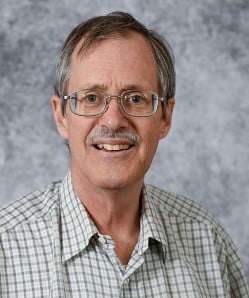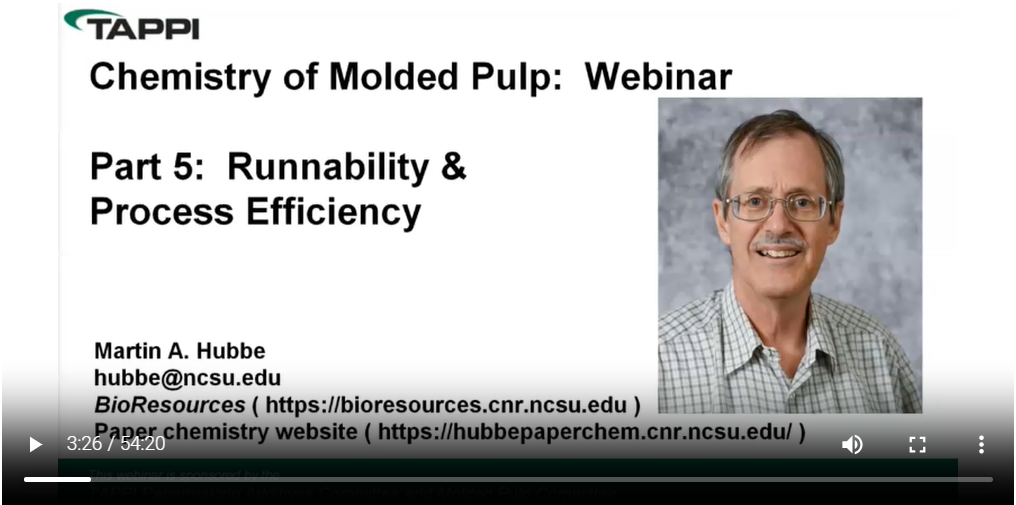 Molded Pulp, Chemical Aspects Webinar Part 5: Runnability and Process Efficiency
Molded Pulp, Chemical Aspects Webinar Part 5: Runnability and Process Efficiency
Any operation that involves repeated contact between a cellulosic suspension and screen surfaces can be subject to problems with deposit formation, loss of production efficiency, and loss of product quality. This webinar will consider issues such as tacky deposits, problems resulting from certain kinds of fiber ources, and synthetic resins giving rise to stickies. Additives to deal with such problems will be covered briefly. Some of these additives can be adopted from other aspects of papermaking, such as release agents, which are used during the creping of tissue products. When the system pH is in the acidic range, many practical problems can be addressed by judicious use of aluminum sulfate and related additives. Often the best place to start, when dealing with runnability issues, is with chemical analysis of deposited material or identification of the chemical nature of spots found in the molded pulp product.
Speaker: Martin Hubbe, North Carolina State University
Martin Hubbe, born in the papermaking town of Millinocket, Maine, earned a Masters degree at the Institute of Paper Chemistry (Appleton, WI, 1979), and a Ph.D. in chemistry at Clarkson University (Potsdam, NY, 1984). After a total of 15 years in corporate research (at American Cyanamid Corp., then International Paper), Hubbe joined North Carolina State University in 1998. As Professor and Buckman Distinguished Scientist, Hubbe teaches and conducts research related to the colloidal chemistry of cellulosic materials, with a particular focus on papermaking wet-end chemistry. Hubbe has conducted research related to paper strength, electrokinetic tests, flocculation, and dewatering. He also has chaired TAPPI’s “Introduction to Wet-End Chemistry” short course and conducted university courses for on-campus students and distance-education. The peer-reviewed scientific journal BioResources, which he co-founded and edits with Dr. Lucia, currently publishes more scientific articles than any other publication devoted to the materials science of paper and wood.
Maine, earned a Masters degree at the Institute of Paper Chemistry (Appleton, WI, 1979), and a Ph.D. in chemistry at Clarkson University (Potsdam, NY, 1984). After a total of 15 years in corporate research (at American Cyanamid Corp., then International Paper), Hubbe joined North Carolina State University in 1998. As Professor and Buckman Distinguished Scientist, Hubbe teaches and conducts research related to the colloidal chemistry of cellulosic materials, with a particular focus on papermaking wet-end chemistry. Hubbe has conducted research related to paper strength, electrokinetic tests, flocculation, and dewatering. He also has chaired TAPPI’s “Introduction to Wet-End Chemistry” short course and conducted university courses for on-campus students and distance-education. The peer-reviewed scientific journal BioResources, which he co-founded and edits with Dr. Lucia, currently publishes more scientific articles than any other publication devoted to the materials science of paper and wood.

